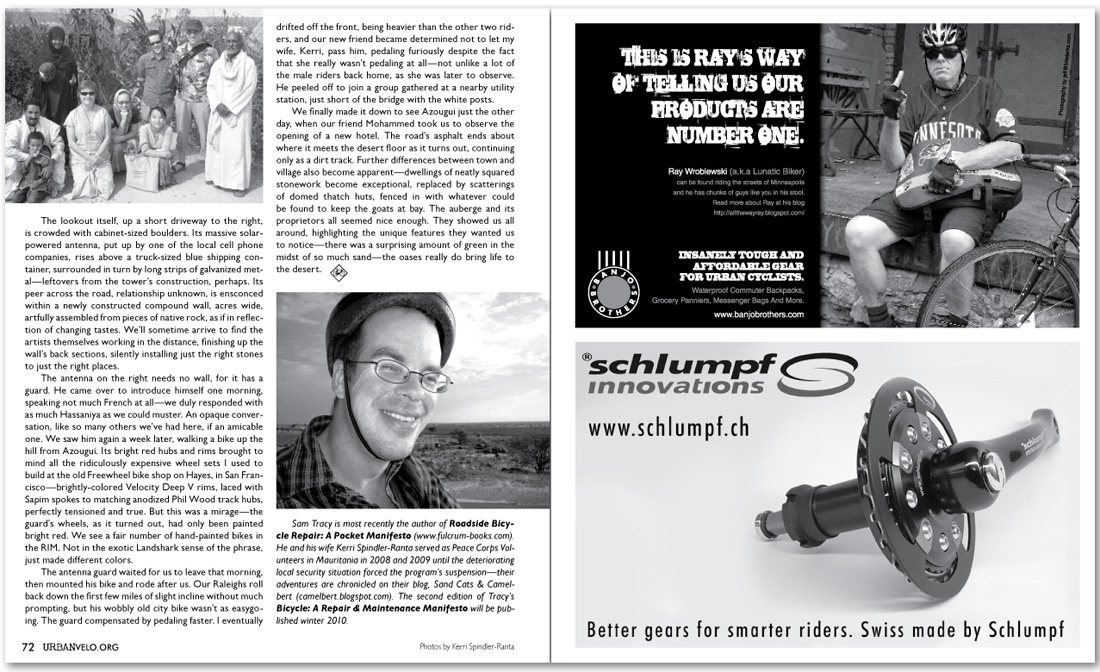The lookout itself, up a short driveway to the right, is crowded with cabinet-sized boulders. Its massive solar-powered antenna, put up by one of the local cell phone companies, rises above a truck-sized blue shipping container, surrounded in turn by long strips of galvanized metal—leftovers from the tower’s construction, perhaps. Its peer across the road, relationship unknown, is ensconced within a newly constructed compound wall, acres wide, artfully assembled from pieces of native rock, as if in reflection of changing tastes. We’ll sometime arrive to find the artists themselves working in the distance, finishing up the wall’s back sections, silently installing just the right stones to just the right places.
The antenna on the right needs no wall, for it has a guard. He came over to introduce himself one morning, speaking not much French at all—we duly responded with as much Hassaniya as we could muster. An opaque conversation, like so many others we’ve had here, if an amicable one. We saw him again a week later, walking a bike up the hill from Azougui. Its bright red hubs and rims brought to mind all the ridiculously expensive wheel sets I used to build at the old Freewheel bike shop on Hayes, in San Francisco—brightly-colored Velocity Deep V rims, laced with Sapim spokes to matching anodized Phil Wood track hubs, perfectly tensioned and true. But this was a mirage—the guard’s wheels, as it turned out, had only been painted bright red. We see a fair number of hand-painted bikes in the RIM. Not in the exotic Landshark sense of the phrase, just made different colors.
The antenna guard waited for us to leave that morning, then mounted his bike and rode after us. Our Raleighs roll back down the first few miles of slight incline without much prompting, but his wobbly old city bike wasn’t as easygoing. The guard compensated by pedaling faster. I eventually drifted off the front, being heavier than the other two riders, and our new friend became determined not to let my wife, Kerri, pass him, pedaling furiously despite the fact that she really wasn’t pedaling at all—not unlike a lot of the male riders back home, as she was later to observe. He peeled off to join a group gathered at a nearby utility station, just short of the bridge with the white posts.
We finally made it down to see Azougui just the other day, when our friend Mohammed took us to observe the opening of a new hotel. The road’s asphalt ends about where it meets the desert floor as it turns out, continuing only as a dirt track. Further differences between town and village also become apparent—dwellings of neatly squared stonework become exceptional, replaced by scatterings of domed thatch huts, fenced in with whatever could be found to keep the goats at bay. The auberge and its proprietors all seemed nice enough. They showed us all around, highlighting the unique features they wanted us to notice—there was a surprising amount of green in the midst of so much sand—the oases really do bring life to the desert.
Sam Tracy is most recently the author of Roadside Bicycle Repair: A Pocket Manifesto (www.fulcrum-books.com). He and his wife Kerri Spindler-Ranta served as Peace Corps Volunteers in Mauritania in 2008 and 2009 until the deteriorating local security situation forced the program’s suspension—their adventures are chronicled on their blog, Sand Cats & Camelbert (camelbert.blogspot.com). The second edition of Tracy’s Bicycle: A Repair & Maintenance Manifesto will be published winter 2010.
